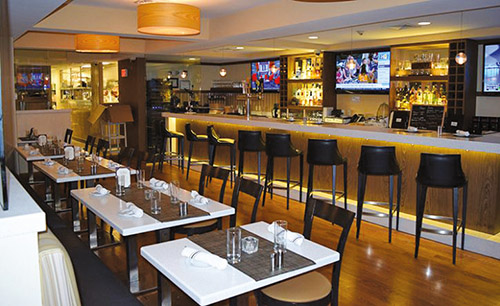
About a decade ago, as part of our community growth effort in Stamford, we decided to survey a sizable number of young families who were living in city apartments and who were looking to purchase a home and relocate to the suburbs in the next two years.
We asked them to rank the factors that were most important in deciding which community they would move to, and we listed a long list of different items on the survey.
Not surprisingly, the proximity and quality of Jewish day schools ranked as the most important factor in choosing a community in which to live.
What was surprising, though, was the factor which ranked second highest: the availability of kosher food and the presence of kosher restaurants. Respondents rated this item higher than affordability of housing, choice of different minyanim, scholarship and pastoral skills of the rabbi, and a critical mass of families who had children their age.
The importance of kosher food in the decision making process was reinforced a few weeks later, when our community exhibited at the Orthodox Union’s bi-annual Jewish Communities Fair. One of the first questions asked by more than a dozen of the attendees who visited our booth was whether our community had a kosher pizza shop. When we told them no, three of the families immediately left the booth as this apparently was a deal breaker for them.
Welcome to 2022, when kosher restaurants and the local availability of kosher meat and other products are no longer a luxury for some, but a necessity.
I think there are two main reasons for this phenomenon. First, most young Orthodox families have both spouses working full-time, which leaves precious little time for cooking dinner during the week and for Shabbat. Even for those families where one spouse is not working, it’s usually because there are babies and toddlers to take care of—which is also a full-time job. Being able to pick up a pizza pie or order from a kosher Chinese restaurant becomes an extremely important time management tool for these busy families.
Second, there is now an entire generation of young families who grew up in communities such as Teaneck, the Five Towns, Flatbush and Kew Gardens Hills who enjoyed the benefits of local kosher eateries as youngsters. It’s not surprising that now that they are raising families of their own, they want the same kosher opportunities they themselves experienced growing up.
I know it’s hard to believe for those a generation younger than me, but when I grew up in West Hempstead, in the 1960s and early 1970s, the closest kosher restaurant was in Forest Hills, where my parents took our family for dinner on Sunday night as a treat every three months. We might have eaten at Ratner’s and Bernstein’s in Manhattan perhaps once a year. When my family moved to Teaneck in 1974, there were zero kosher restaurants on Cedar Lane or Queen Anne Road. And we managed to survive fine!
When the first kosher pizza shop opened in Teaneck in 1976, it was a huge event. Residents flocked to the store to support the owners. We didn’t have expectations of, or demand for, a kosher restaurant; we simply appreciated the fact that there was now a place where teens could hang out on a Saturday night and families could take their kids out to eat on a weeknight when they didn’t feel like cooking dinner.
Today it’s very different. With many established Orthodox communities in the New York metro area already bragging about multiple kosher restaurants of virtually every cuisine and flavor, other communities are expected to have at least a kosher pizza shop and a couple more upscale kosher eateries. And if they don’t, it’s looked upon negatively by the folks living in the community, as well as prospective residents.
Because we are now able to live a much more fulfilling Orthodox Jewish life than in generations past, I think we have become a bit spoiled. Instead of showing hakarat hatov and appreciating the enormous growth in the availability of kosher food and the establishment of kosher restaurants of various stripes, we expect that our communities service our culinary needs with multiple kosher eateries.
Whether we like it or not, the reality is that this expectation is probably not going to change. I’m a member of multiple local WhatsApp groups here in Stamford where I live: a group promoting shul and community events, a group announcing shiva information, a mitzvah opportunity group. But the WhatsApp group that gets the most posts by far is the local kosher food group, where announcements are regularly made about kosher food deliveries from various restaurants outside the Stamford area that are looking to cash in on the huge demand for kosher takeout food from the Orthodox families who live here. On any given night, there is likely some kosher restaurant making a delivery to eager consumers in Stamford.
We already have a great kosher steakhouse in Stamford (613 Restaurant…check it out at 613restaurant.com) and even a kosher vegetarian Indian restaurant that is supervised under the local va’ad. The supply-demand equation is such that it likely won’t be long before a kosher pizza shop and perhaps another kosher establishment open their doors in our community. No doubt some business owner will recognize this opportunity soon. And I hope that if or when that does happen, community members will show their appreciation and support for these eateries, rather than simply view them as just another bunch of kosher establishments that are expected to serve the community.
Michael Feldstein is a contributing editor for the Jewish Link. He owns his own marketing consulting firm, MGF Marketing, and can be reached at [email protected].













